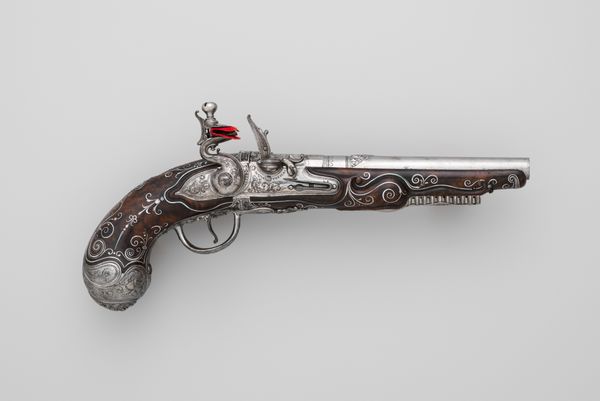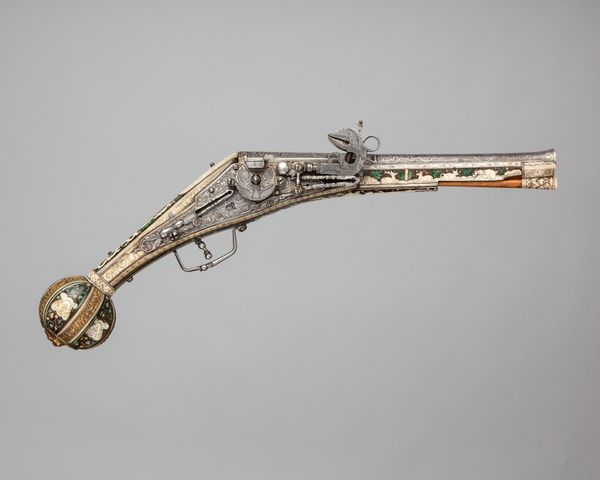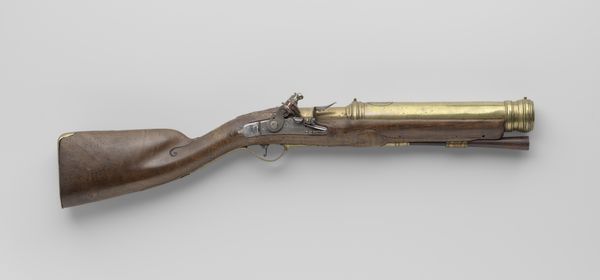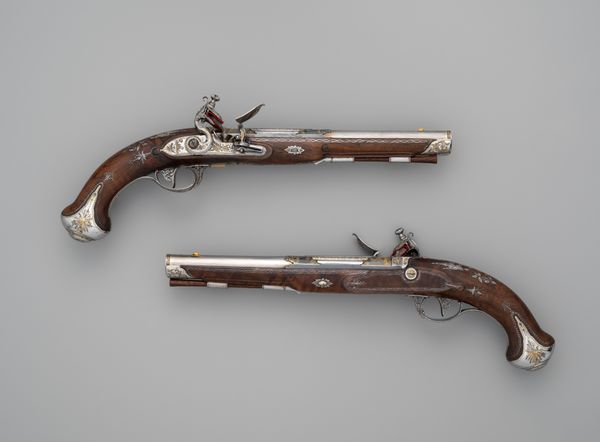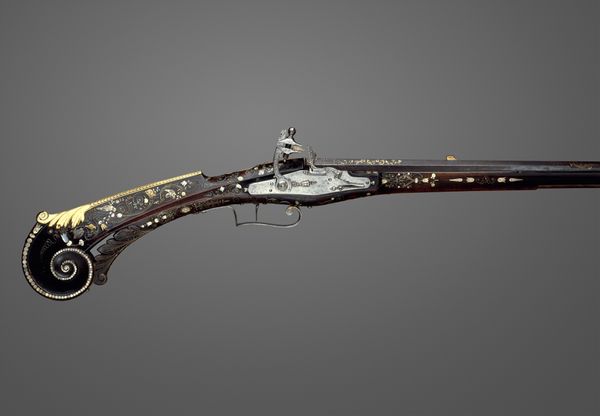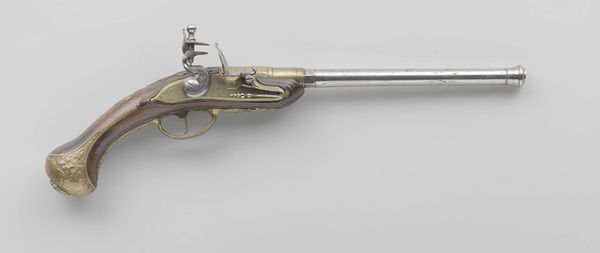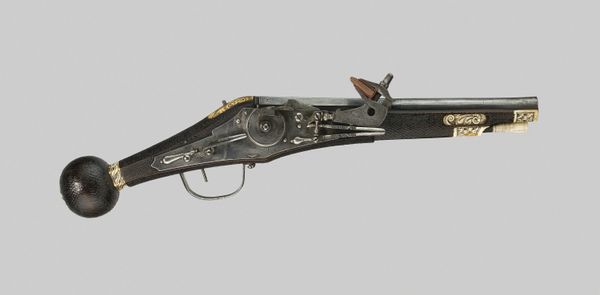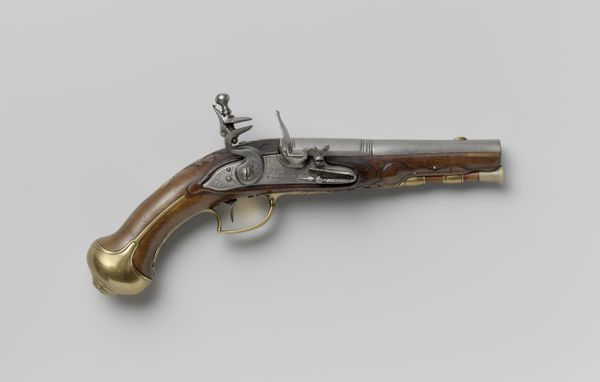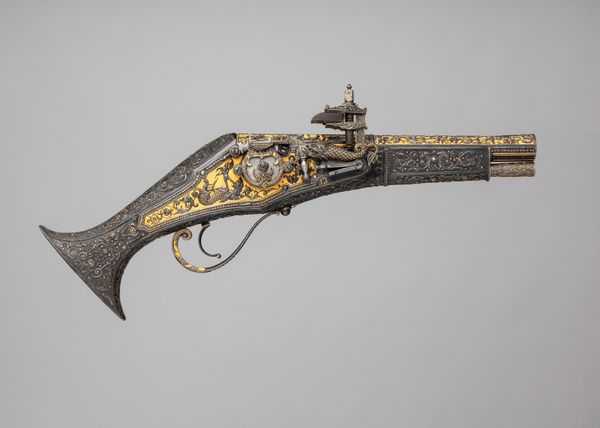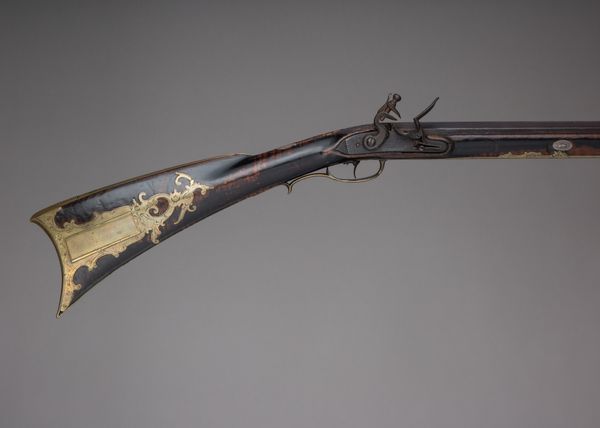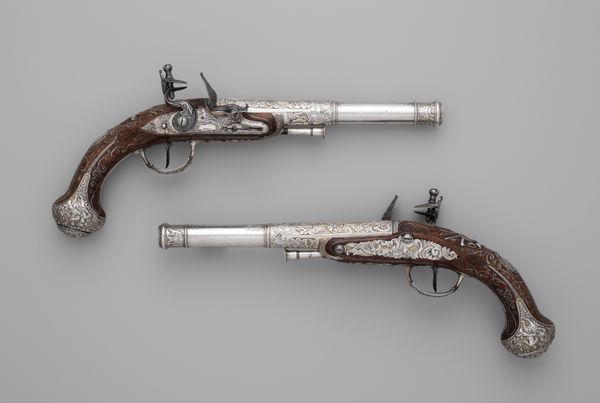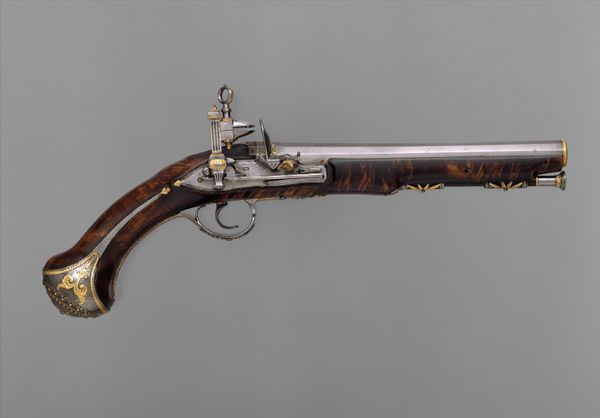
Double-Barreled Wheellock Pistol Made for Emperor Charles V (reigned 1519–56) 1515 - 1570
0:00
0:00
carving, metal, gold
#
carving
#
germany
#
metal
#
gold
#
11_renaissance
#
history-painting
#
armor
Dimensions: L. 19 3/8 in. (49.2 cm); L. of upper barrel 10 in. (25.4 cm); L. of lower barrel 7 5/8 in. (19.4 cm); Cal. of each barrel .46 in. (11.7 mm); Wt. 5 lb. 10 oz. (2550 g)
Copyright: Public Domain
Curator: Looking at this "Double-Barreled Wheellock Pistol" sparks so many narratives, doesn't it? Made for Emperor Charles V sometime between 1515 and 1570, it's housed here at the Metropolitan Museum of Art. What strikes you first? Editor: Opulence. Plain and simple, the thing screams, “I’m ridiculously expensive." All that gold inlay. Imagine the man-hours someone spent meticulously working with metal. The twist of the handle, too, like it’s some baroque dessert topping. It's not just a weapon; it’s a performance. Curator: Exactly! It is almost absurdly decorative. One forgets its primary purpose, looking at that intricate carving. But in a way, the artistry elevates it, doesn't it? Transcending mere utility to become almost an object of contemplation. Editor: See, I wonder who *made* it, really made it. Signed Peter Peck, sure, but how many apprentices, how much raw material from where? Who mined the ore, processed the wood, carved the ivory? It embodies the whole global Renaissance trade in labor and resources right in your hand. The details themselves almost fade against the question of scale and production, right? Curator: That is true. It makes you wonder about all the forgotten hands who played their parts, the people written out of history, quietly making sure the pistol actually functions so the Emperor could brandish a pretty and dangerous weapon! Thinking about labor transforms how we view even luxury objects... Editor: And maybe shifts the perspective. Suddenly it is less about individual genius, more about collective process, about the system that permits someone like Charles V to own such a showy, unnecessary… tool. Though, maybe the necessity lies more in symbol than application, hmmm. Curator: Absolutely. The “tool” as pure symbol, power externalized in gleaming metal. Looking at the pistol from a materialist perspective adds important dimension that I think transforms what we understand as power and access. Editor: Agreed. When you think of the lives entwined to create this weapon – both the artist and the forgotten labourers – it offers a far less glorified narrative. I won't look at gold the same way now.
Comments
No comments
Be the first to comment and join the conversation on the ultimate creative platform.

